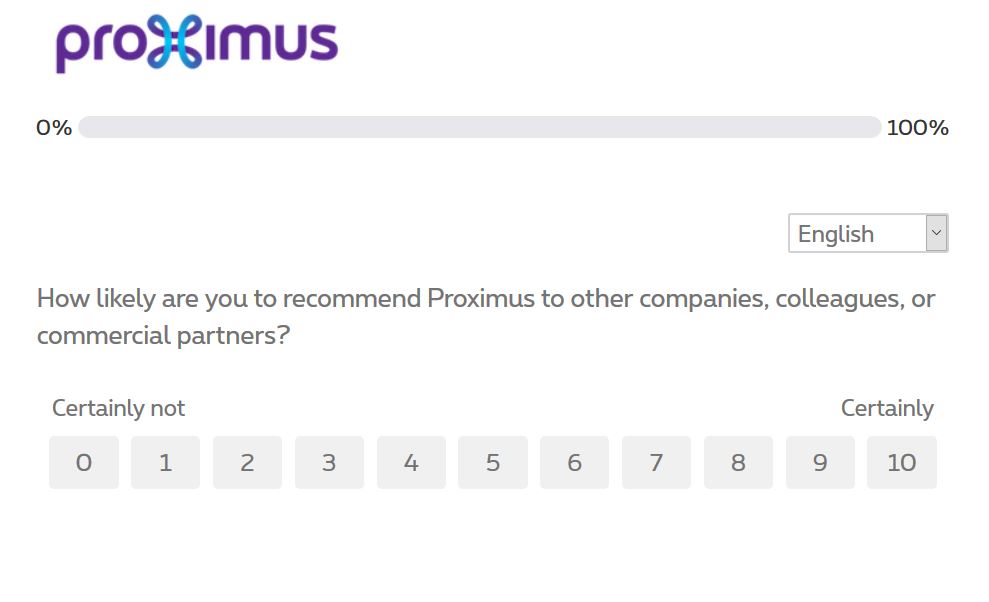
From a very young age, we have been taught what open-ended, and closed-ended questions are. How are these terms applied to qualitative research methods, and in particular to interviews?
Kathryn J. Roulston reveals her definitions of an open-ended and closed-ended question in qualitative interviews in the SAGE Encyclopedia on Qualitative Research Methods. If you want to better understand how qualitative methods fit within a market research approach, we suggest you take a look at our step-by-step guide to market research which can be downloaded in our white papers section (free of charge and direct; we won’t ask you any contact details first).
credits : Shutterstock
Summary
- Introduction
- Closed-ended question
- Open-ended question
- Examples of closed and open-ended questions for satisfaction research
- Examples of closed and open-ended questions for innovation research
- Some practical advice
Introduction
Let us begin by pointing out that open and closed-ended questions do not at first glance serve the same purpose in market research. Instead, open-ended questions are used in qualitative research (see the video above for more information) and closed-ended questions are used in quantitative research. But this is not an absolute rule.
In this article, you will, therefore, discover the definitions of closed and open-ended questions. We will also explain how to use them. Finally, you will find examples of how to reformulate closed-ended questions into
open-ended questions in the case of :
Essential elements to remember
Open-ended questions:
- for qualitative research (interviews and focus groups)
- very useful in understanding in detail the respondent and his or her position concerning a defined topic/situation
- particularly helpful in revealing new aspects, sub-themes, issues, and so forth that are unknown or unidentified
Closed-ended questions:
- for quantitative research (questionnaires and surveys)
- suitable for use with a wide range of respondents
- allow a standardised analysis of the data
- are intended to confirm the hypotheses (previously stated in the qualitative part)
A closed-ended question
A closed-ended question offers, as its name suggests, a limited number of answers. For example, the interviewee may choose a response from a panel of given proposals or a simple “yes” or “no”. They are intended to provide a precise, clearly identifiable and easily classified answer.
This type of question is used in particular during interviews whose purpose is to be encoded according to pre-established criteria. There is no room for free expression, as is the case for open-ended questions.
Often, this type of question is integrated into 1-to-1 interview guides and focus groups and allows the interviewer to collect the same information from a wide range of respondents in the same format. Indeed, closed-ended questions are designed and oriented to follow a pattern and framework predefined by the interviewer.
credits : Shutterstock
Two forms of closed-ended questions were identified by the researchers: specific closed-ended questions, where respondents are offered choice answers, and implicit closed-ended questions, which include assumptions about the answers that can be provided by respondents.
A specific closed-ended question would be formulated as follows, for example: “how many times a week do you eat pasta: never, once or twice a week, 3 to 4 times, 5 times a week or more?”
The adapted version in the form of an implicit closed-ended question would be formulated as follows: “how many times a week do you eat pasta? ». The interviewer then assumes that the answers will be given in figures.

While some researchers consider the use of closed-ended questions to be restrictive, others see in these questions – combined with open-ended questions – the possibility of generating different data for analysis. How these closed-ended questions can be used, formulated, sequenced, and introduced in interviews depends heavily upon the studies and research conducted upstream.
In what context are closed-ended questions used?
- Quantitative research (tests, confirmation of the qualitative research and so on).
- Research with a large panel of respondents (> 100 people)
- Recurrent research whose results need to be compared
- When you need confirmation, and the possible answers are limited in effect
An open-ended question
An open-ended question is a question that allows the respondent to express himself or herself freely on a given subject. This type of question is, as opposed to closed-ended questions, non-directive and allows respondents to use their own terms and direct their response at their convenience.
Open-ended questions, and therefore without presumptions, can be used to see which aspect stands out from the answers and thus could be interpreted as a fact, behaviour, reaction, etc. typical to a defined panel of respondents.
For example, we can very easily imagine open-ended questions such as “describe your morning routine”. Respondents are then free to describe their routine in their own words, which is an important point to consider. Indeed, the vocabulary used is also conducive to analysis and will be an element to be taken into account when adapting an interview guide, for example, and/or when developing a quantitative questionnaire.
credits : Shutterstock
As we detail in our market research whitepaper, one of the recommendations to follow when using open-ended questions is to start by asking more general questions and end with more detailed questions.
For example, after describing a typical day, the interviewer may ask for clarification on one of the aspects mentioned by the respondent. Also, open-ended questions can also be directed so that the interviewee evokes his or her feelings about a situation he or she may have mentioned earlier.
In what context are open-ended questions used?
- Mainly in qualitative research (interviews and focus groups)
- To recruit research participants
- During research to test a design, a proof-of-concept, a prototype, and so on, it is essential to be able to identify the most appropriate solution.
- Analysis of consumers and purchasing behaviour
- Satisfaction research, reputation, customer experience and loyalty research, and so forth.
- To specify the hypotheses that will enable the quantitative questionnaire to be drawn up and to propose a series of relevant answers (to closed-ended questions).
It is essential for the interviewer to give respondents a framework when using open-ended questions. Without this context, interviewees could be lost in the full range of possible responses, and this could interfere with the smooth running of the interview.
Another critical point concerning this type of question is the analytical aspect that follows. Indeed, since respondents are free to formulate their answers, the data collected will be less easy to classify according to fixed criteria.
The use of open-ended questions in quantitative questionnaires
Rules are made to be broken; it is well known. Most quantitative questionnaires, therefore, contain free fields in which the respondent is invited to express his or her opinions in a more “free” way. But how to interpret these answers?
When the quantity of answers collected is small (about ten) it will be easy to proceed manually, possibly by coding (for more information on the coding technique, go here). You will thus quickly identify the main trends and recurring themes.
On the other hand, if you collect hundreds or even thousands of answers, the analysis of these free answers will be much more tedious. How can you do it? In this case, we advise you to use a semantic analysis tool. This is most often an online solution, specific to a language, which is based on an NLP (Natural Language Processing) algorithm. This algorithm will, very quickly, analyse your corpus and bring out the recurring themes. It is not a question here of calculating word frequencies, but instead of working on semantics to analyse the repetition of a subject.
Of course, the use of open-ended questions in interviews does not exclude the use of closed-ended questions. Alternating these two types of questions in interviews, whether 1-to-1 interviews, group conversations or focus groups, is conducive not only to maintaining a specific dynamic during the interview but also to be able to frame specific responses while leaving certain fields of expression free.
In general, it is interesting for the different parties that the interview ends with an open-ended question where the interviewer asks the interviewee if he or she has anything to add or if he or she has any questions.
Examples of closed and open-ended questions for satisfaction research
| Closed question | Open-ended question | Comments and remarks |
| Are you satisfied? | How would you describe your satisfaction with this product? | The new wording forces the respondent to think about and verbalise his or her satisfaction. |
| Are you satisfied? | What aspects of this product most affect your satisfaction? | The open-ended rewording allows respondents to focus on particular aspects of the product, its functionality, and to question themselves. This question is particularly useful in a product improvement process. |
| Do you like this? | If you had the opportunity, what would you most like to change? What would you not change about this product under any circumstances? |
This is a rewording quite similar to the previous one. The open-ended question makes it possible to highlight specific positive or negative points. The advantage of these rewordings is also that you will be able to understand the adequacy/inadequacy of the product concerning lifestyle or consumption habits. This can be very useful in the process of improvement. |
| Did the performance of the product meet your expectations? | What did you expect when you… | The rewording in the open-ended question here provides an opportunity to understand the shaping of expectations (and the possible frustrations that lead to the shaping of these expectations). In customer satisfaction theory, it is crucial to understand the level of expectations and to ensure that they are exceeded. |
Examples of closed and open-ended questions for innovation research
In this type of research, you confront the respondent with a new, innovative product or service. It is therefore important not to collect superficial opinions but to understand in depth the respondent’s attitude towards the subject of the market research.
| Closed question | Open-ended question (rewording) | Comments and remarks |
| Do you intend to use this product? | How do you think this product could help you? Can you describe how you would use this product? |
This question is particularly critical in the case of an innovative approach. Remember that the declarative elements are unreliable. Therefore, an ethnographic approach is needed to force the respondent to think about how he or she might use a new product, how it might fit into his or her daily routine. |
| Is it easy to use? | What do you find most annoying about using this product? | The open-ended question forces the respondent to find defects in the product. The flaws will be identified and will allow the interviewer to investigate the problems and to understand their origin. |
| Do you like this product? | What are the 3 features you like most about this product? What are the 2 aspects of this product that you find most different from a similar product? |
In these open-ended questions, we use a brainstorming technique that forces respondents to find several arguments and exhausts the most common answers. In the second rewording, we also highlight differentiating aspects. Knowing these can be interesting in terms of marketing and communication. |
| Would you buy this product? | What would make you want to buy this product? What aspects of this product do you find most interesting? Imagine if you could test this product. On what basis would you judge that you need it? |
Each of the open-ended rewordings in question highlights the points that differentiate the product, those that the consumer finds most attractive. Using such an open-ended question can be interesting to understand which aspects are most appealing and whether these are the same regardless of the population segment. A market segment may react differently to the arguments put forward (think of age segments, for example). Knowing which cases to put forward according to your targets can, therefore, be a considerable asset. |
Some practical advice
As you will have understood, open-ended questions are particularly suitable for qualitative research (1-to-1 interviews and focus groups). How should they be formulated?
The Five W’s; (who did what, where, when, and why ) questioning method should be used rigorously and sparingly :
- Who? Who? What? Where? When? How? How much? “are particularly useful for qualitative research and allow you to let your interlocutor develop and elaborate a constructed and informative answer.
- Use the CIT (Critical Incident Technique) method with formulations that encourage your interviewer to go into the details of an experience: “Can you describe/tell me…? “, ” What did you feel? “, ” According to you… “
- Avoid asking “Why?”: this question may push the interviewer into a corner, and the interviewer may seek logical reasoning for his or her previous answer. Be gentle with your respondents by asking them to tell you more, to give you specific examples, for example.
In contrast, closed-ended questions are mainly used and adapted to quantitative questionnaires since they facilitate the analysis of the results by framing the participants’ answers.
Image: Shutterstock
Posted in Marketing.


19 July 2021
Very useful sir….